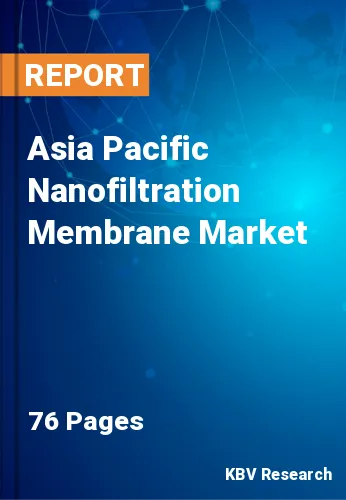The Asia Pacific Nanofiltration Membrane Market would witness market growth of 6.5% CAGR during the forecast period (2019-2025).
The advancements in Nanofiltration have significantly expanded their capacities in quite high or low pH environments and their application to non-aqueous liquids. Industrial applications of nanofiltration membrane are quite prevalent in the food and dairy sector, in chemical processing, in the pulp and paper sector and textiles, although the main application remains in the treatment of fresh, process and wastewater. Nanofiltration is a pressure-driven, membrane-based separation technology that uses membranes capable of maintaining nanoscale particles and molecules. The three main types of nanofiltration membranes namely, polymeric, inorganic, and hybrid technologies are finding immense applications across several industries including water and wastewater treatment, chemical and petrochemical, food and beverage, agriculture, pharmaceutical and biomedical, and solid waste management.
Based on Product Type, the market is segmented into Polymeric, Inorganic and Hybrid. Based on Application, the market is segmented into Water & Wastewater Treatment, Food and Beverages, Chemical & Petrochemicals, Pharmaceutical & Biomedical and Others. Based on countries, the market is segmented into China, Japan, India, South Korea, Singapore, Malaysia, and Rest of Asia Pacific.
The market research report covers the analysis of key stake holders of the market. Key companies profiled in the report include Applied Membranes, Inc., Argonide Corporation, Synder Filtration, Inc., Linde PLC, Merck Group, SPX Flow, Inc., Alfa Laval AB, Siemens AG, GEA Group AG, and Danaher Corporation.
Market Segmentation:
By Product Type
By Application
By Country
Companies Profiled
Our team of dedicated experts can provide you with attractive expansion opportunities for your business.

